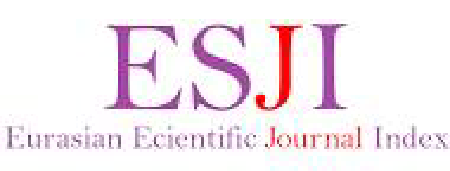CROSS-CULTURAL PERSPECTIVES ON EPISTEMIC MODALITY IN ENGLISH AND UZBEK: FUNCTIONAL AND SEMANTIC DIMENSIONS
Abstract
This study explores the cross-cultural similarities and differences in the expression of epistemic modality (EM) in English and Uzbek, with a focus on its functional and semantic aspects. Epistemic modality, which conveys a speaker’s evaluation or judgement regarding truth, probability and reliability, is represented in both languages through wide range of linguistic tools such as modal verbs, adjectives, adverbs, auxiliary constructions. In former language, the use of explicit modal markers is common and it systematically expresses specific degrees of certainty. However, in Uzbek language, adverbial expressions, alongside with intonational patterns and other contextual factors play crucial role since they reflect a preference for implicit and indirect expressions. Regarding the cross-cultural differences and similarities, both languages use lexical devices such as modal verbs and adverbs, non-lexical features, including prosody (intonation, pitch, stress) and paralinguistic cues (pauses, tone, body language) and they play an essential role in conveying certainty and emotional nuances. Uzbek relies more heavily on these non-lexical tools in the absence of explicit modal markers. Semantically, English employs a systematical scale of modal markers, starting from low(might) to high certainty (must), whereas Uzbek’s expressions are more context-dependant and less rigidly graded. From a functional perspective, these differences reflect cultural norms: in English directness and precision, aligning with individualistic values are prioritized, while Uzbek puts emphasize on politeness and ambiguity, consistent with collectivist traditions. This study highlights how linguistic structures mirror cultural communication patterns, contributing to a deeper understanding of cross-linguistic diversity.
References
Aikhenvald, A. Y. (2004). Evidentiality. Oxford University Press.
Bybee, J., Perkins, R., & Pagliuca, W. (1994). The evolution of grammar: Tense, aspect, and modality in the languages of the world. University of Chicago Press.
Chafe, W., & Nichols, J. (Eds.). (1986). Evidentiality: The linguistic coding of epistemology. Ablex.
Halliday, M. A. K., & Matthiessen, C. M. I. M. (2014). Halliday’s introduction to functional grammar (4th ed.). Routledge.
Hoye, L. F. (1997). Adverbs and modality in English. Longman.
Palmer, F. R. (2001). Mood and modality (2nd ed.). Cambridge University Press.
Ramat, A., & Ricca, D. (1998). Sentence adverbs in the languages of Europe. In J. van der Auwera (Ed.), Adverbial constructions in the languages of Europe (pp. 187–275). Mouton de Gruyter.
Suyunov, J., & Ismoilova, M. (2020). Modal expressions in Uzbek: Semantic and functional perspectives. Central Asian Journal of Linguistics, 2(1), 45–59.
Van der Auwera, J., & Plungian, V. A. (1998). Modality’s semantic map. Linguistic Typology, 2(1), 79–124. https://doi.org/10.1515/lity.1998.2.1.79






















